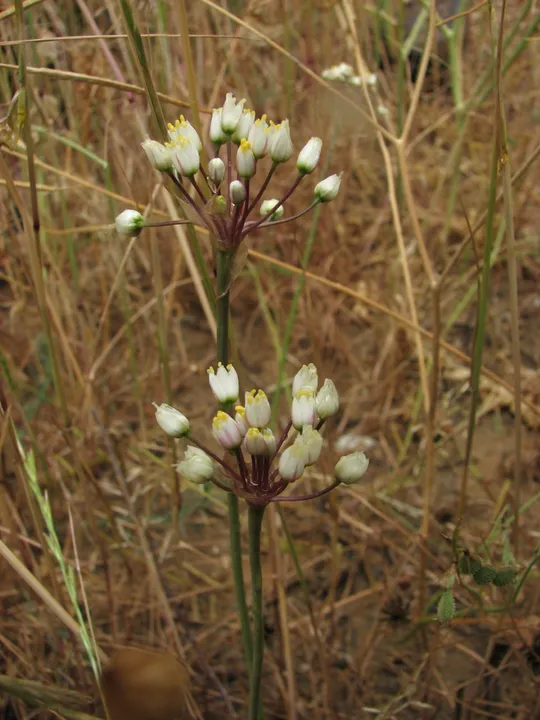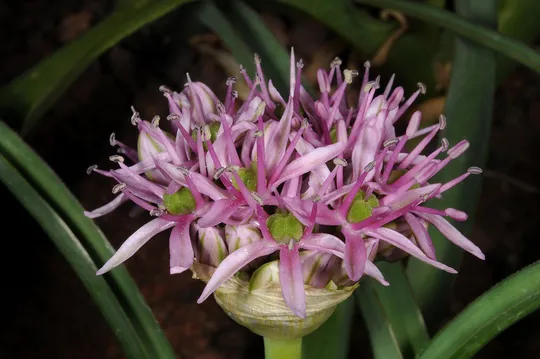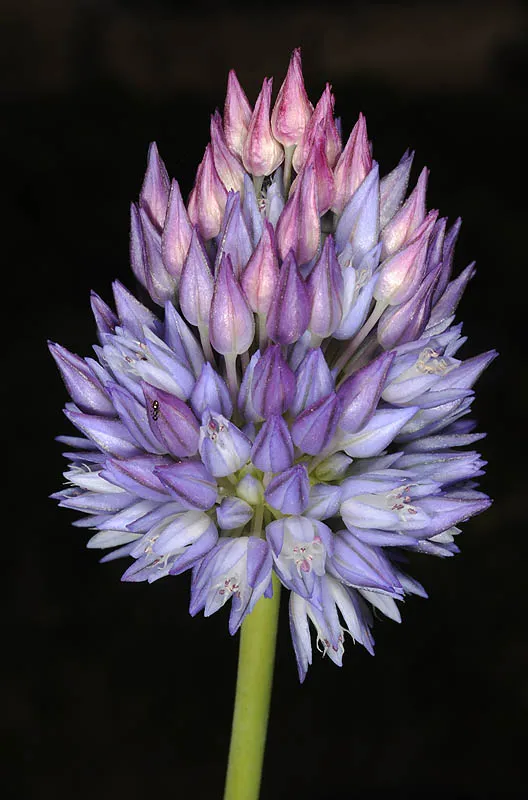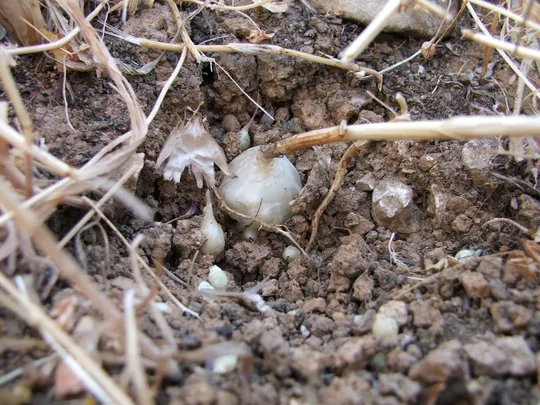Long-stamened Garlic
Allium tardiflorum
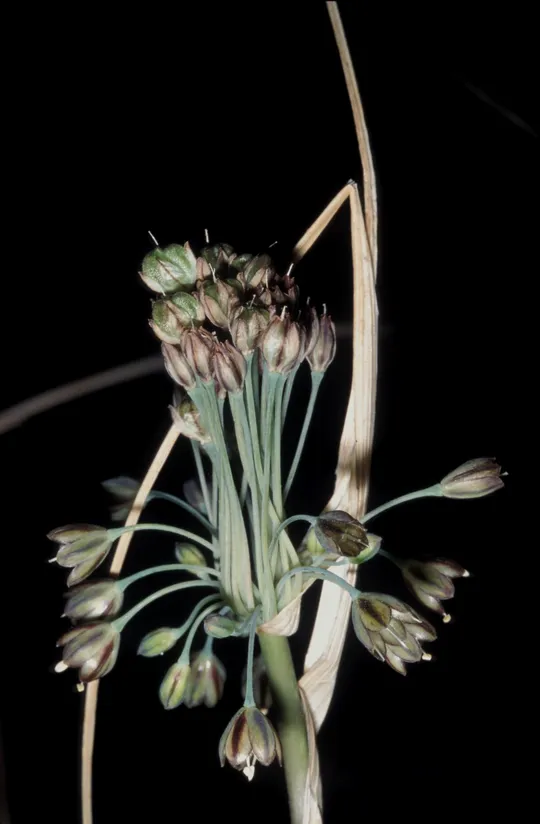
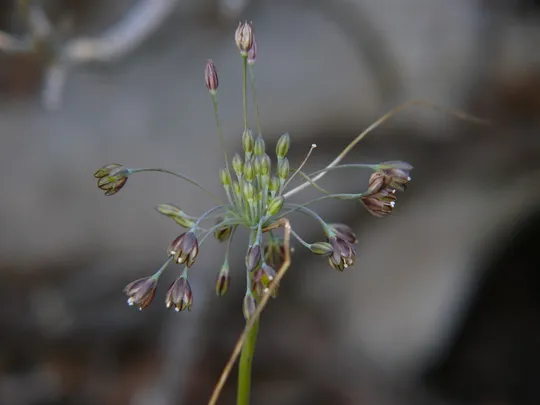
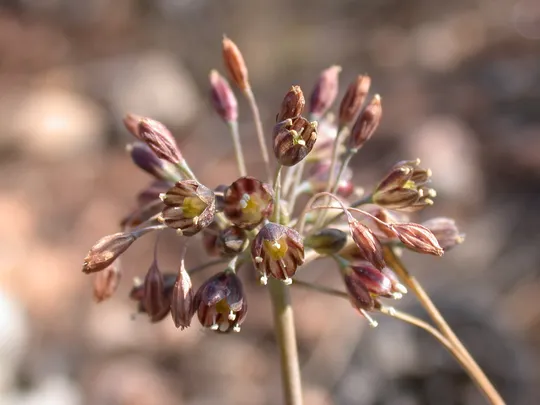
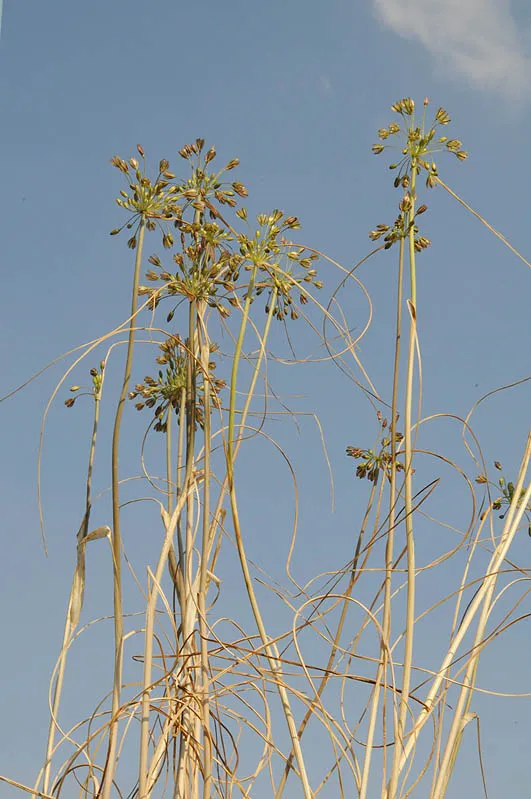
Allium tardiflorum grows in Israel
only in the Carmel, at 11 sites, although it is estimated that there are about
15 sites. All the sites are located on the northern and high part of the Carmel
Ridge – Wadi Ben-Dor, upper Wadi Nesher, Hareva Quarries, Yagur-Svah Ridge, Mount
Arkan, Mount Shokef, Upper Wadi Oren, from the Alon Valley to the area of Isfia-Dalyat
el-Carmel, Wadi Nets, Bet-Oren Hill, Ya'arot HaCarmel.
Chalk slopes in
semi-shaded forest on rendzina soils and on rocky slopes and rocky limestone and dolomite ground in the mountainous Carmel area.
The genus Allium
includes about 700 species, whose most outstanding characteristic is a strong
smell of garlic. This is the largest genus in the Alliaceae family,
which it is now widely accepted to distinguish from the other Liliaceae families.
The global distribution of the genus is broad, particularly in the northern
continents. One of its major centers extends throughout our region: the
Mediterranean countries, the mountains of southern Europe and western Asia. In
Israel 35 species of Allium grow, belonging to five different sections. They
are found throughout Israel from the peak of Mount Hermon to the Negev, in
diverse habitats (with the exception of wetlands). All Allium species
have a typical spherical umbel inflorescence from which the flowers emerge from
one center and are not arranged along a flower stalk. They have basal leaves, occasionally
also on the lower section of the stem. The leaf has a wide sheath, which
envelops the leaves sheaths above it and the stem. The leaves are linear, flat
or channeled, or rolled up and hollow. Allium species have a
single unbranched peduncle (scape), which has no leaves, at least on its upper
part. Before blooming the inflorescence is enveloped by a membranous spathe,
which is an identifying sign of the genus. Prior to flowering the spathe splits
along its length into 2-8 strips. In some cases the spathe bracts remain when
the plant blooms and in others they fall when the flower opens.
A.
tardiflorum belongs to the section Codonoprasum (see A. albotunicatum),
it is included in the group of fall flowering geophytes. These genera, e.g. Scilla,
Muscari and Crocus have species that bloom in spring, but some
species within each genus shifted the flowering season to fall when they face
less competition for pollinators.
·
Allium tardiflorum is known in the Carmel from the early 1980s after Yoav
Gertman and Hava Lahav discovered it and described it to science as new species
in 1990. Consequently there is no data available for comparison with earlier periods
and it is not possible to assess trend changes in the number of its sites.
·
A. tardiflorum
populations on the Carmel sites usually number a few dozen plants.
·
Its habitat is not endangered thanks to its relatively
low accessibility and because the sites are included within the boundaries of a
nature reserve and national park.
·
A. tardiflorum
is endemic to Israel and its local threat is equivalent to its global threat.
Allium tardiflorum populations should
be monitored over the long-term at all its sites to study its change trends, if
any, and formulate management policy.
Allium tardiflorum is endemic to
the Carmel in Israel, but it can also be seen as a late-flowering subspecies of
A. paniculatum. Similar autumn
species grow in Cyprus, Crete, Turkey, Greece and even the Carpathians (Kollman
et al., 1990). If these species are combined in a single taxonomic unit
blooming in the fall, we eliminate both the species endemic to Cyprus and the
species endemic to the Carmel and the species has a broader geographic
distribution.
Allium tardiflorum is an autumn
flowering geophyte characteristic of chalk and rendzina on the Carmel. It has great
conservation importance as it is endemic to the Carmel, i.e. its global
distribution is limited only to the Carmel.
Kollman, F., A. Shmida, and O. Cohen, 1990. Allium tardiflorum, a new autumn-flowering species, Herbertia, 46(1):
23-32.
Current Occupancy Map
| 1000 squre meter pixel | 5000 squre meter pixel | 10000 squre meter pixel | |
|---|---|---|---|
| number of observations | 0 | 0 | 0 |
| in total pixels | 0 | 0 | 0 |
| Family | Liliaceae |
| Classification | On the endangered species list |
| Ecosystem | Mediterranean |
| Chorotype | Mediterranean |
| Conservation Site | HaHagana Hill on the Carmel |
| Rarity |
1
4
6
|
|---|---|
| Vulnerability |
0
0
4
|
| Attractiveness |
0
0
4
|
| Endemism |
0
4
4
|
| Red number |
1
4.2
10
|
| Peripherality | 0 |
| IUCN category | DD EW EX LC CR EN VU NT |
| Threat Definition according to the red book | Endangered |
 Based on:
Based on:
